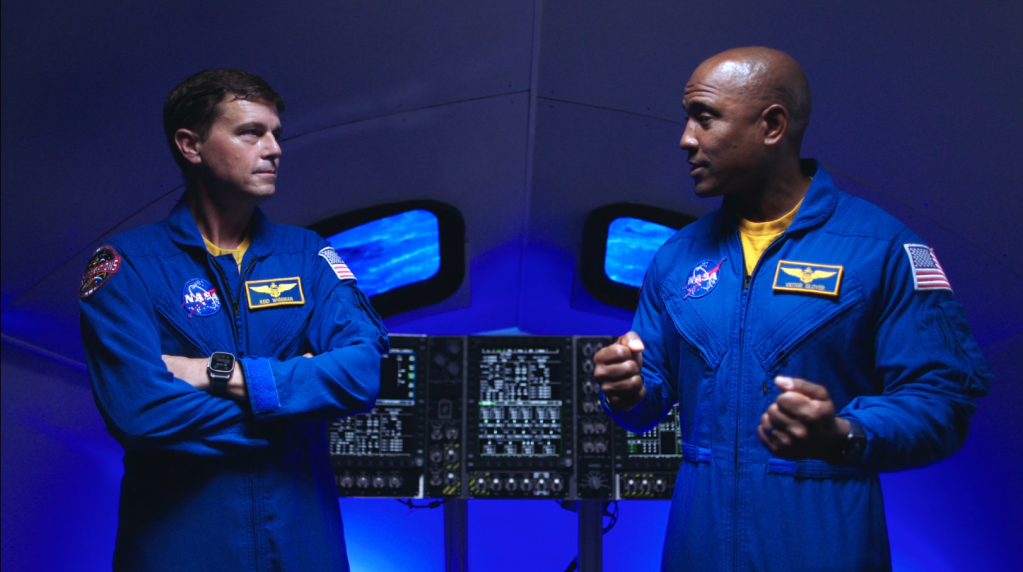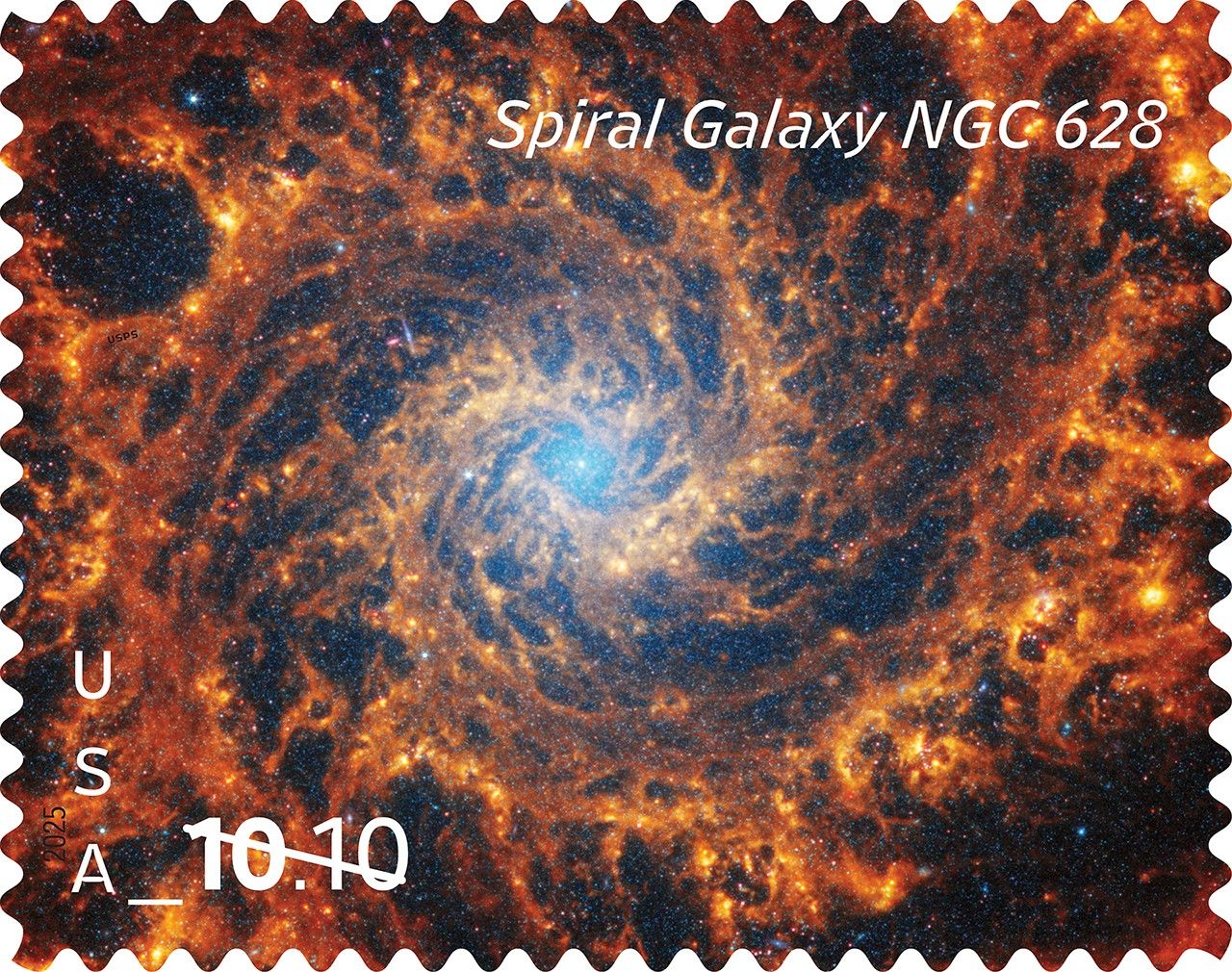In August 2001, space shuttle Discovery arrived at the International Space Station during the STS-105 mission. The primary goal for the four-member shuttle crew of astronauts Scott J. Horowitz, Frederick W. “Rick” Sturckow, Patrick G. Forrester, and Daniel T. Barry involved bringing the Expedition 3 crew of NASA astronaut Frank L. Culbertson and Vladimir N. Dezhurov and Mikhail V. Tyurin representing Roscosmos to the space station and returning Expedition 2 crew members Yuri V. Usachev of Roscosmos and NASA astronauts James S. Voss and Susan J. Helms back to Earth. They also brought food, clothes, and science equipment to the space station, and returned hardware and research samples back to Earth. Barry and Forrester completed two spacewalks to prepare the station for future assembly.
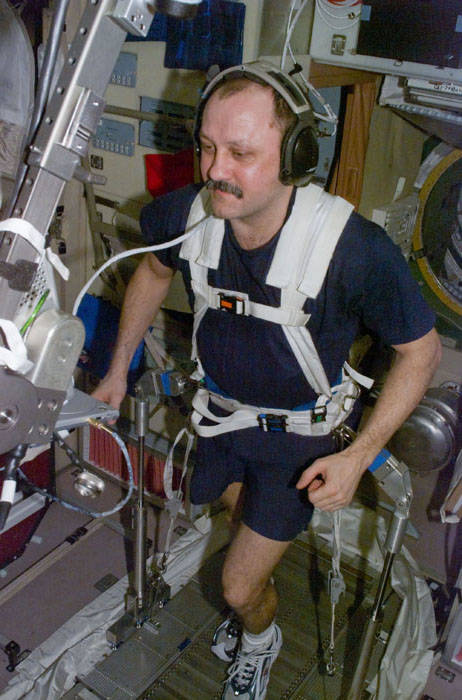
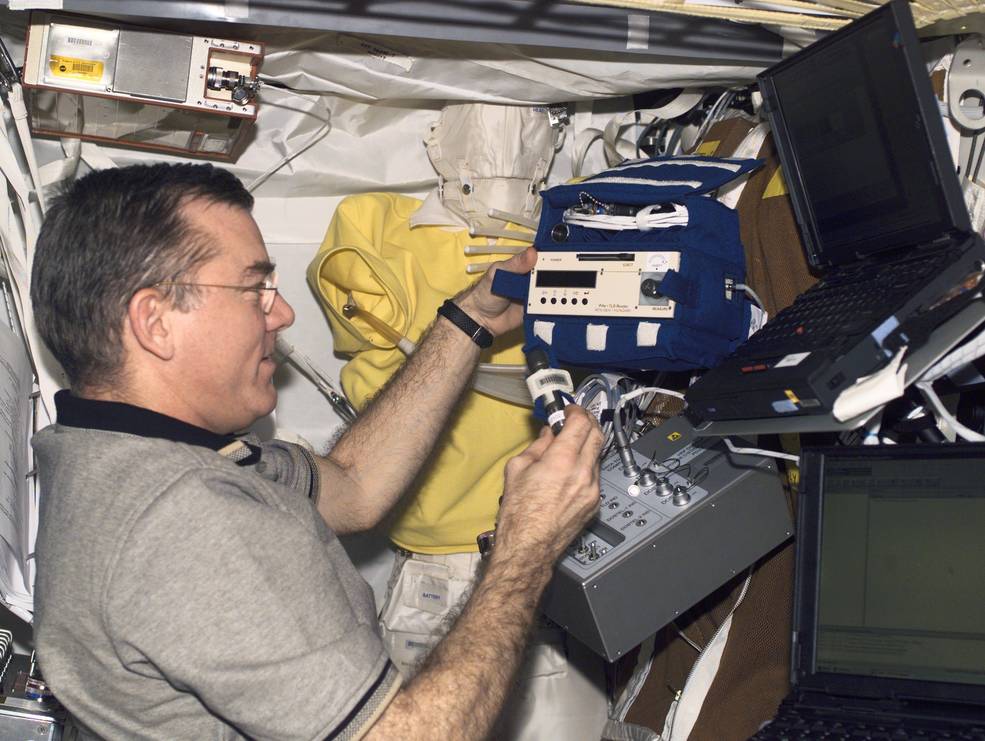
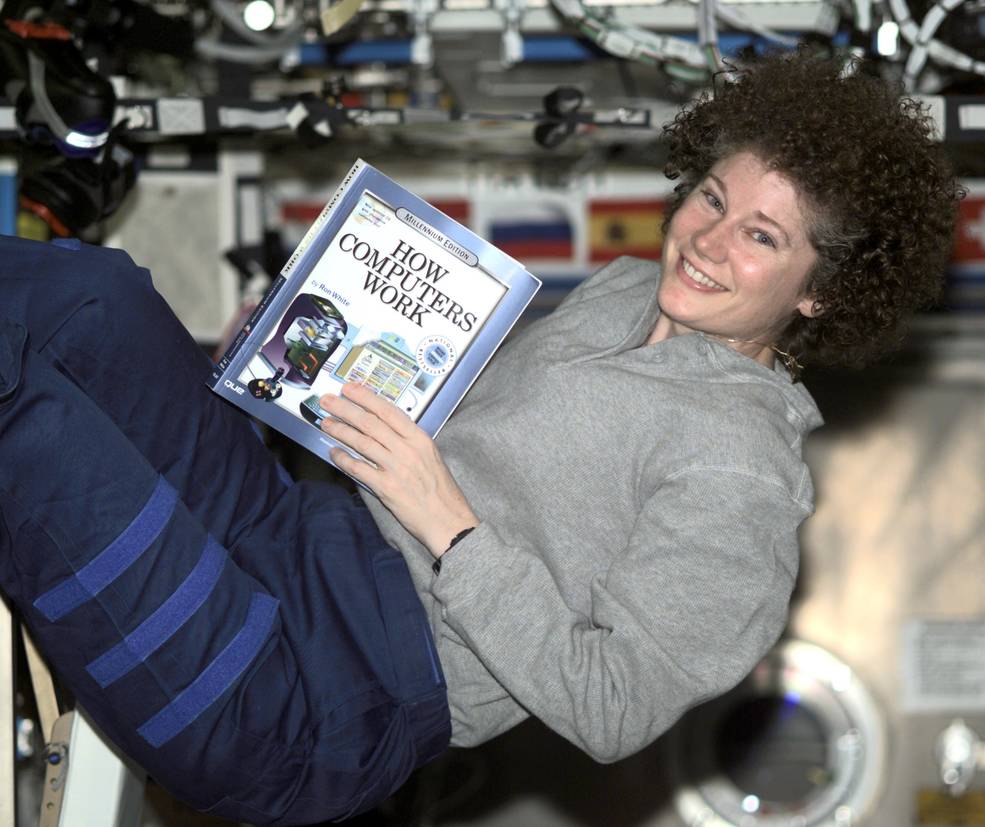
Left: Expedition 2 cosmonaut Yuri V. Usachev exercises on the space station’s treadmill in preparation
for return to Earth. Middle: Expedition 2 astronaut James S. Voss conducts a session with the DOSMAP
radiation experiment. Right: Expedition 2 astronaut Susan J. Helms doing some tongue-in-cheek onboard
refresher training on computer systems.
The Expedition 2 crew arrived aboard the space station in March 2001 for a planned four-month mission that was extended by about one month due to delays in the shuttle schedule. Following the departure of the STS-104 crew aboard space shuttle Atlantis on July 22, Usachev, Voss, and Helms only had three weeks until the arrival of STS-105 – the mission to return them to Earth. They spent much of their time finishing up science experiments, stowing items for return on the shuttle, and preparing for their own return to Earth, which included performing additional exercise to aid in their readaptation to gravity.
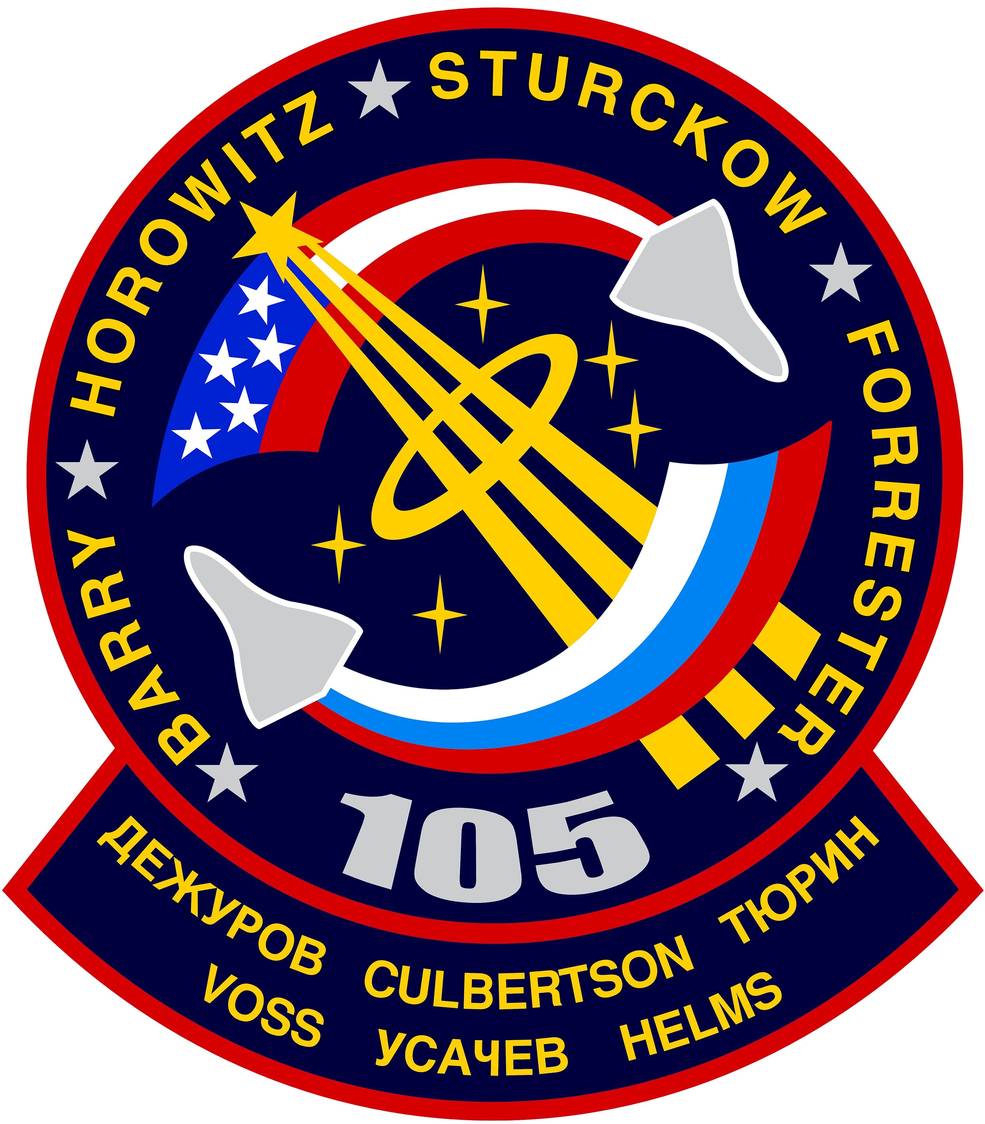
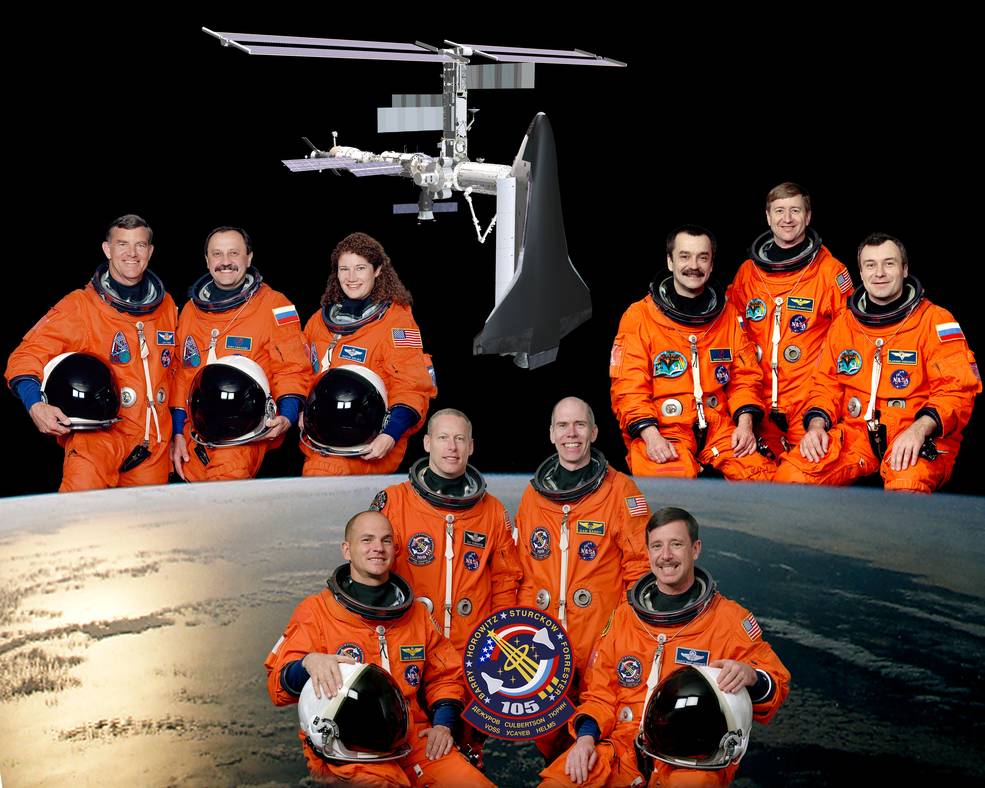
Left: The STS-105 crew patch. Right: The STS-105 space shuttle crew of Frederick
W. “Rick” Sturckow, left, Patrick G. Forrester, Daniel T. Barry, and Scott J. Horowitz
shown in the middle, with the Expedition 2 crew of James S. Voss, left, Yuri V. Usachev,
and Susan J. Helms at upper left, and the Expedition 3 crew of Mikhail V. Tyurin, left,
Frank L. Culbertson, and Vladimir N. Dezhurov at upper right.
The 11th space shuttle mission to the space station, STS-105, began on August 10, 2001, with the launch of space shuttle Discovery from Launch Pad 39A at NASA’s Kennedy Space Center (KSC) in Florida. On their second day in space, Expedition 3 crew members Culbertson, Dezhurov, and Tyurin completed the first session of the H-Reflex experiment, designed to look for changes in their neuromuscular system brought on by weightlessness, an investigation they continued after transferring to the space station. Less than two days after launch, Horowitz guided Discovery to a smooth docking with the station at the Pressurized Mating Adapter-2, or PMA-2, located on the forward end of the Destiny U.S. laboratory module. The two crews opened the hatches between the two spacecraft and began the transfer of time- critical items from the shuttle’s middeck and onto the station.
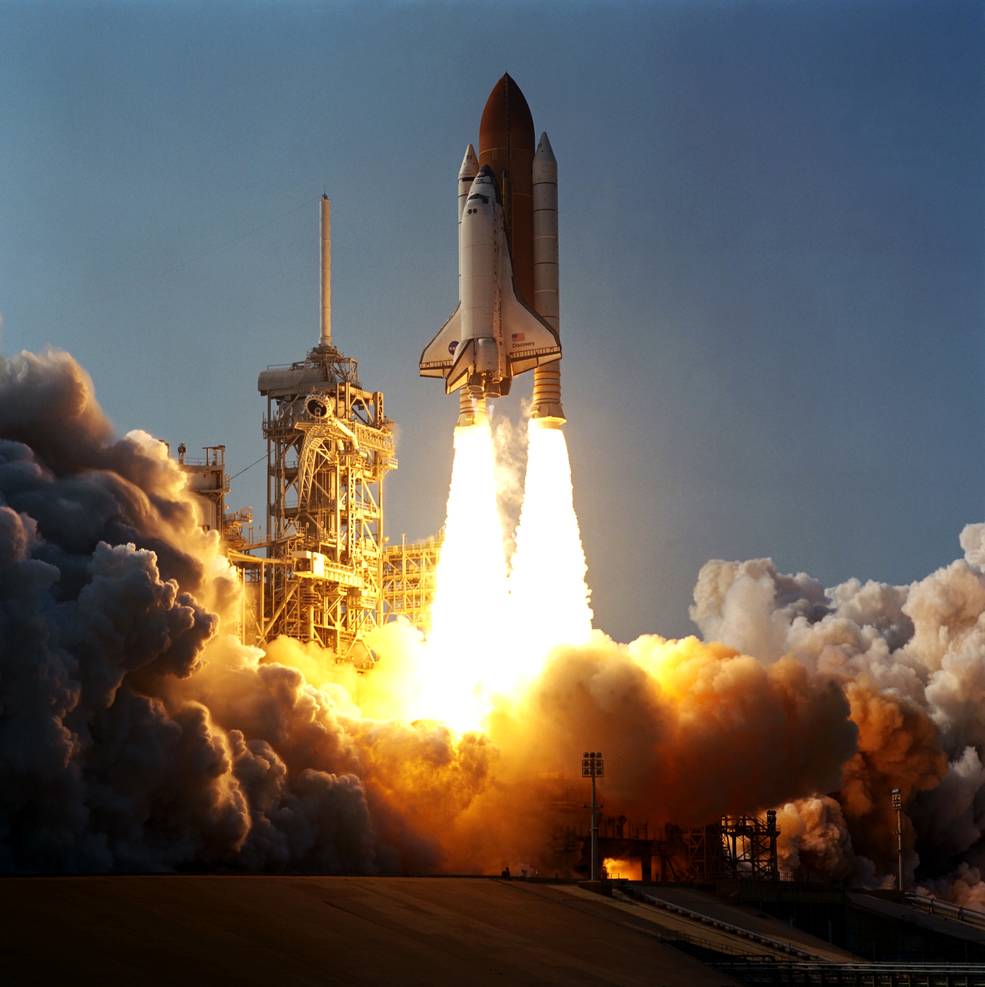
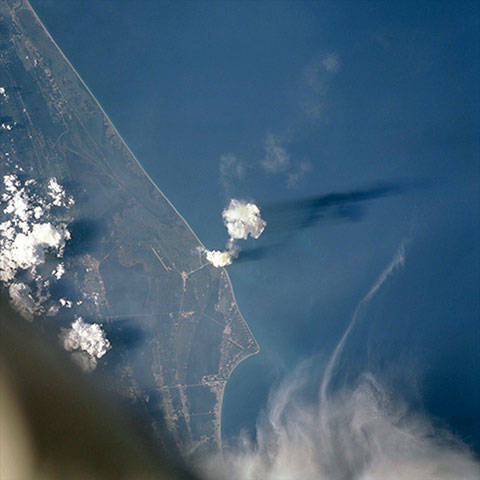
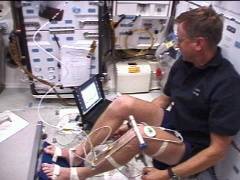
Left: Launch of Atlantis on space shuttle mission STS-105 from NASA’s Kennedy Space Center in Florida.
Middle: View from the International Space Station of Discovery’s launch. Right: In Discovery’s middeck,
Expedition 3 astronaut Frank L. Culbertson conducting the first session of the H-Reflex experiment
investigating changes to astronauts’ neuromuscular systems brought on by weightlessness.
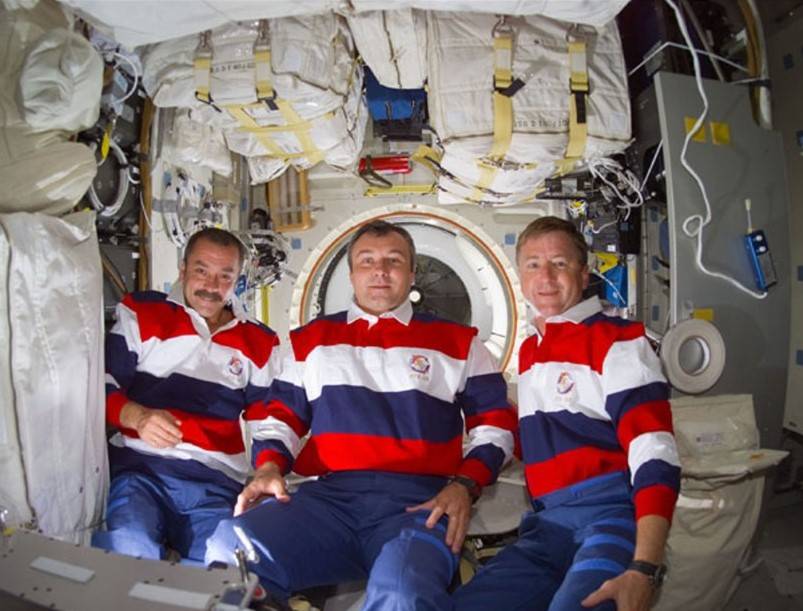
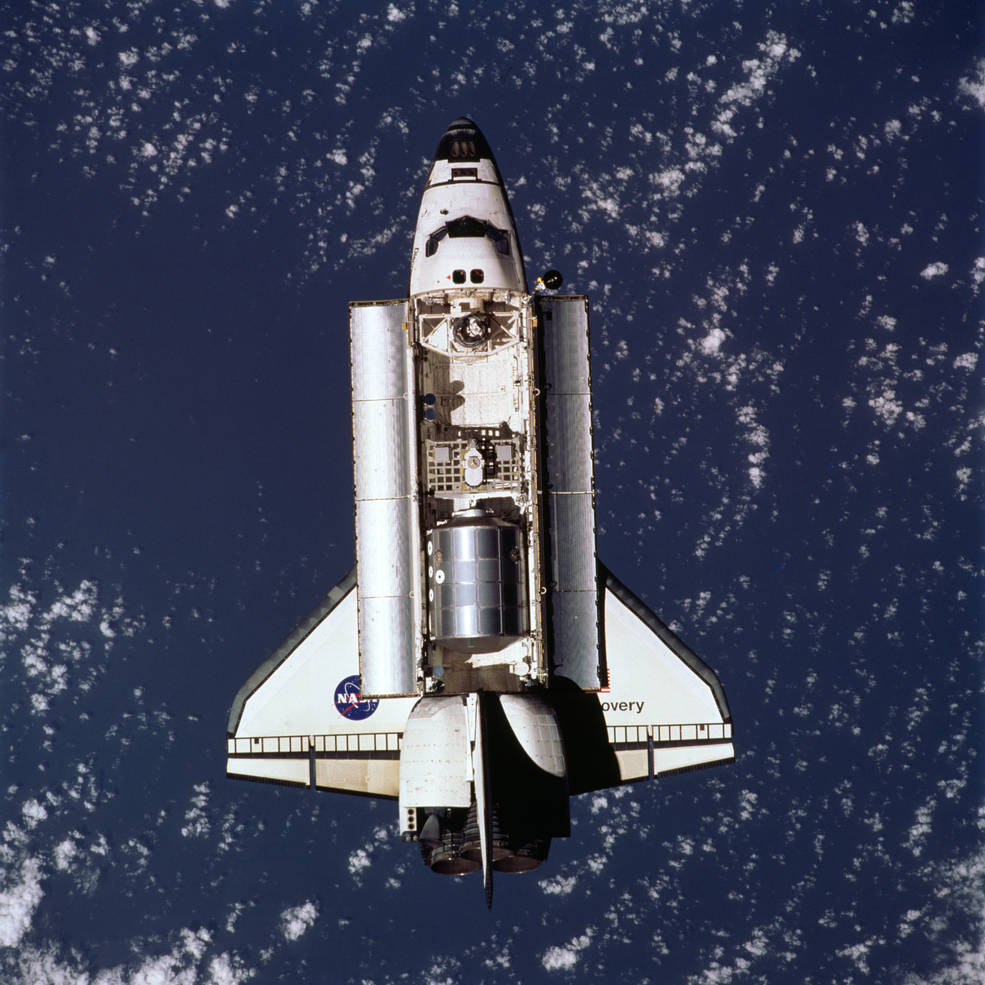
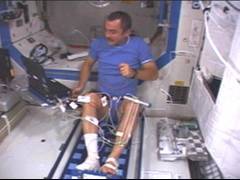
Left: Expedition 3 crew members Mikhail V. Tyurin, left, Vladimir N. Dezhurov, and Frank L. Culbertson in Discovery’s
middeck can’t wait to get aboard the space station. Middle: Space shuttle Discovery approaching the space station.
Right: In the Destiny U.S. Laboratory module, Tyurin conducting a session of the H-Reflex experiment investigating
changes to astronauts’ neuromuscular systems brought on by weightlessness.
The day after the docking, Forrester used the shuttle’s robotic arm to lift the Leonardo Multi-Purpose Logistics Module (MPLM) out of the payload bay and transfer it to the Unity Node 1 module. Culbertson, Dezhurov, and Tyurin transferred their individualized custom seat liners into the Soyuz TM-32 spacecraft – which was kept docked to the space station in case of an emergency – operationally making them space station expedition crew members, and Usachev, Voss, and Helms became members of the STS-105 crew. The joint crews began the transfer of 7,000 pounds of supplies and equipment from the MPLM to the station the next day, including two new research facilities, the Expedite the Processing of Experiments to the Space Station (EXPRESS) Racks 4 and 5. At the end of the sixth day, the crews closed the hatches between the two spacecraft to enable them to reduce the pressure inside the shuttle to prepare for the first of the mission’s two spacewalks.
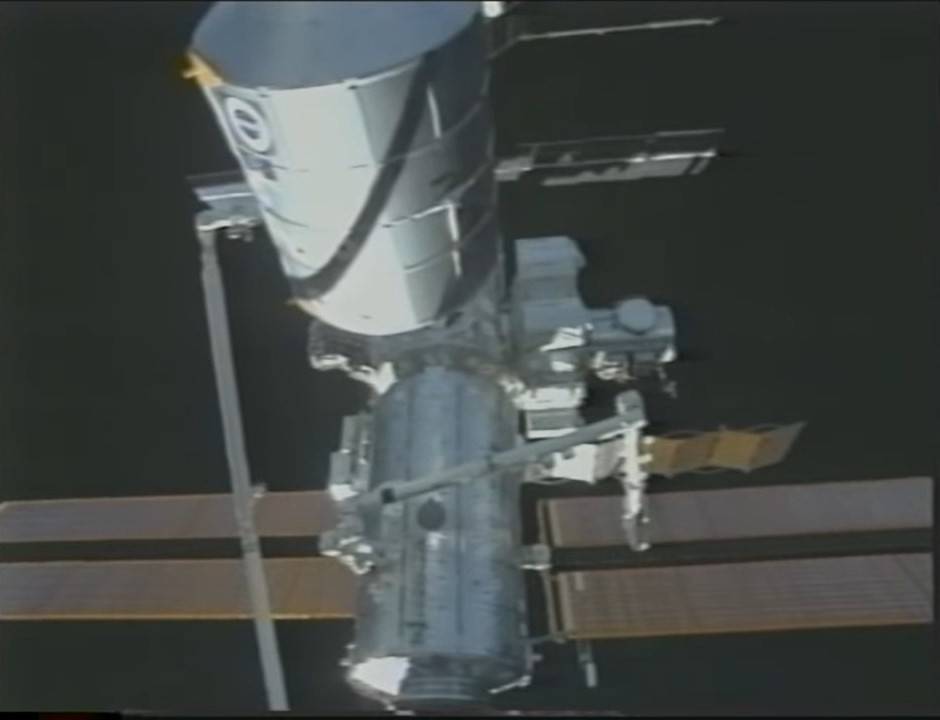
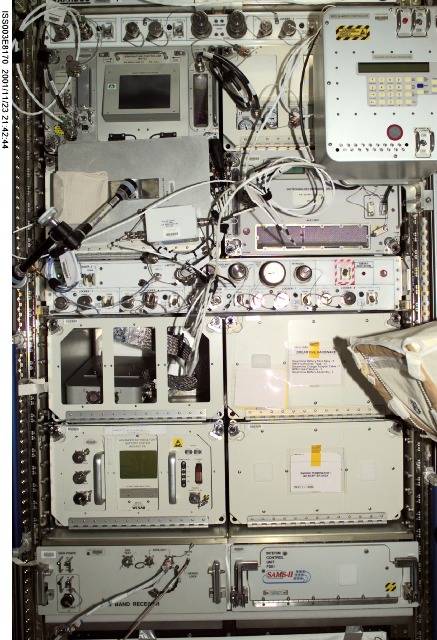
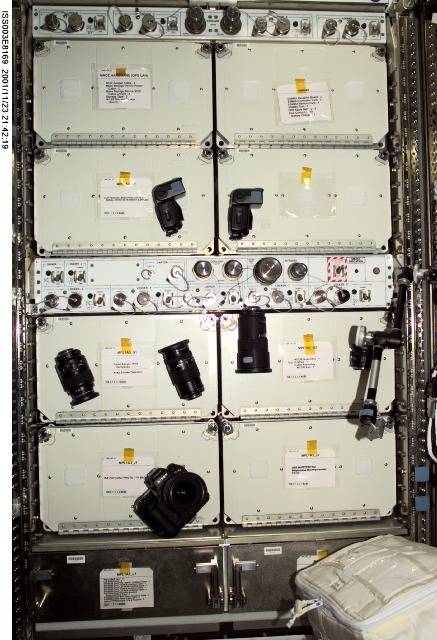
Left: The space shuttle’s robotic arm transferring the Leonardo Multi-Purpose Logistics
Module from the payload bay to the Unity Node 1 module. Middle: Installed in the Destiny
U.S. Laboratory module, the Expedite the Processing of Experiments to the Space Station
(EXPRESS) Rack 4, one of the two research facilities delivered by STS-105.
Right: EXPRESS Rack 5, the other research facility that STS-105 delivered,
installed in Destiny.
On Aug. 16, the mission’s seventh day – and coincidentally the 1,000th day since the launch of the space station’s first element, the Zarya module, on Nov. 20, 1998 – Barry and Forrester donned their spacesuits and depressurized the shuttle’s airlock to begin their first spacewalk. The primary objective of this activity involved the placement of the Early Ammonia Servicer (EAS) on the P6 truss. The EAS contained ammonia to be used by the space station’s cooling system if needed. A secondary objective of the first spacewalk consisted of the deployment of the space station’s first external science experiment, the Materials on ISS Experiment (MISSE), two suitcase-sized pallets containing a variety of materials exposed to the harsh external environment around the station. Barry and Forrester installed the two suitcases on the outside of the Quest Airlock for a planned one-year exposure. Due to the hiatus in shuttle flights following the Columbia accident, the MISSE suitcases did not return to Earth until 2005 after a nearly four-year exposure. After completing all of their goals, Barry and Forrester returned to the space station and clocked in their first spacewalk at 6 hours, 16 minutes.
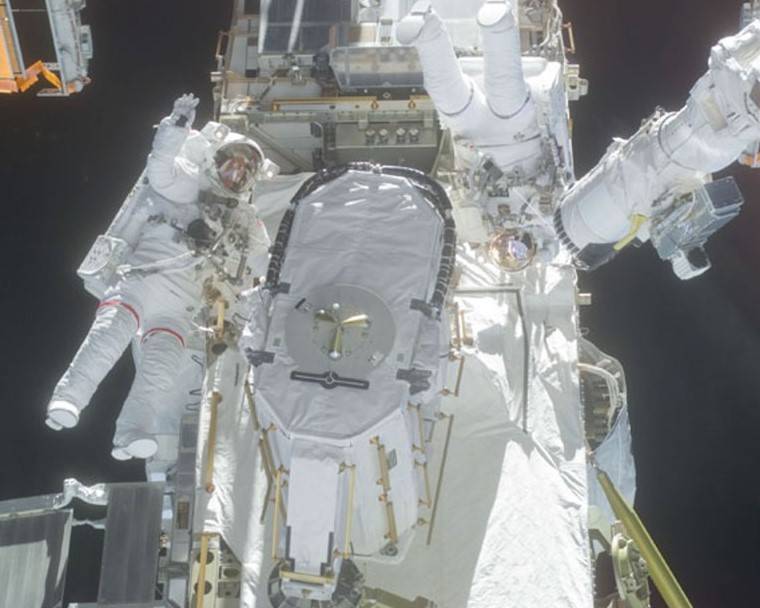
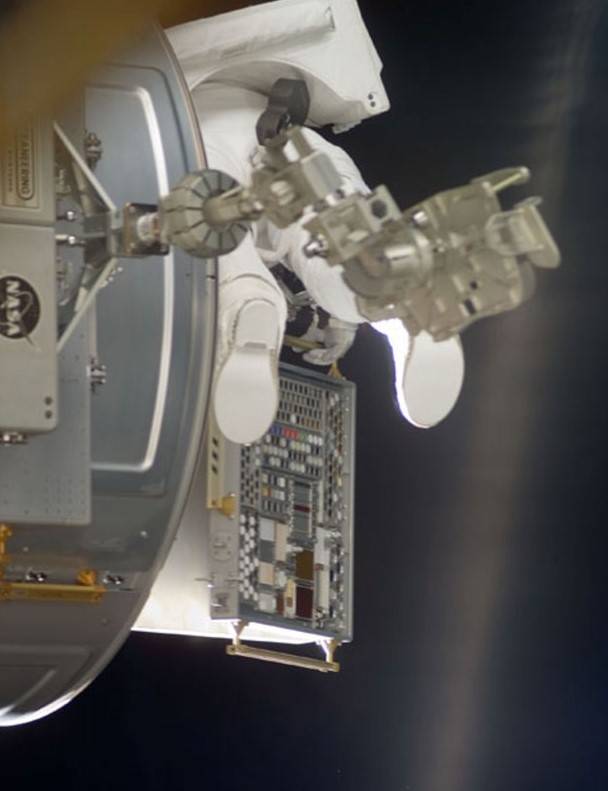
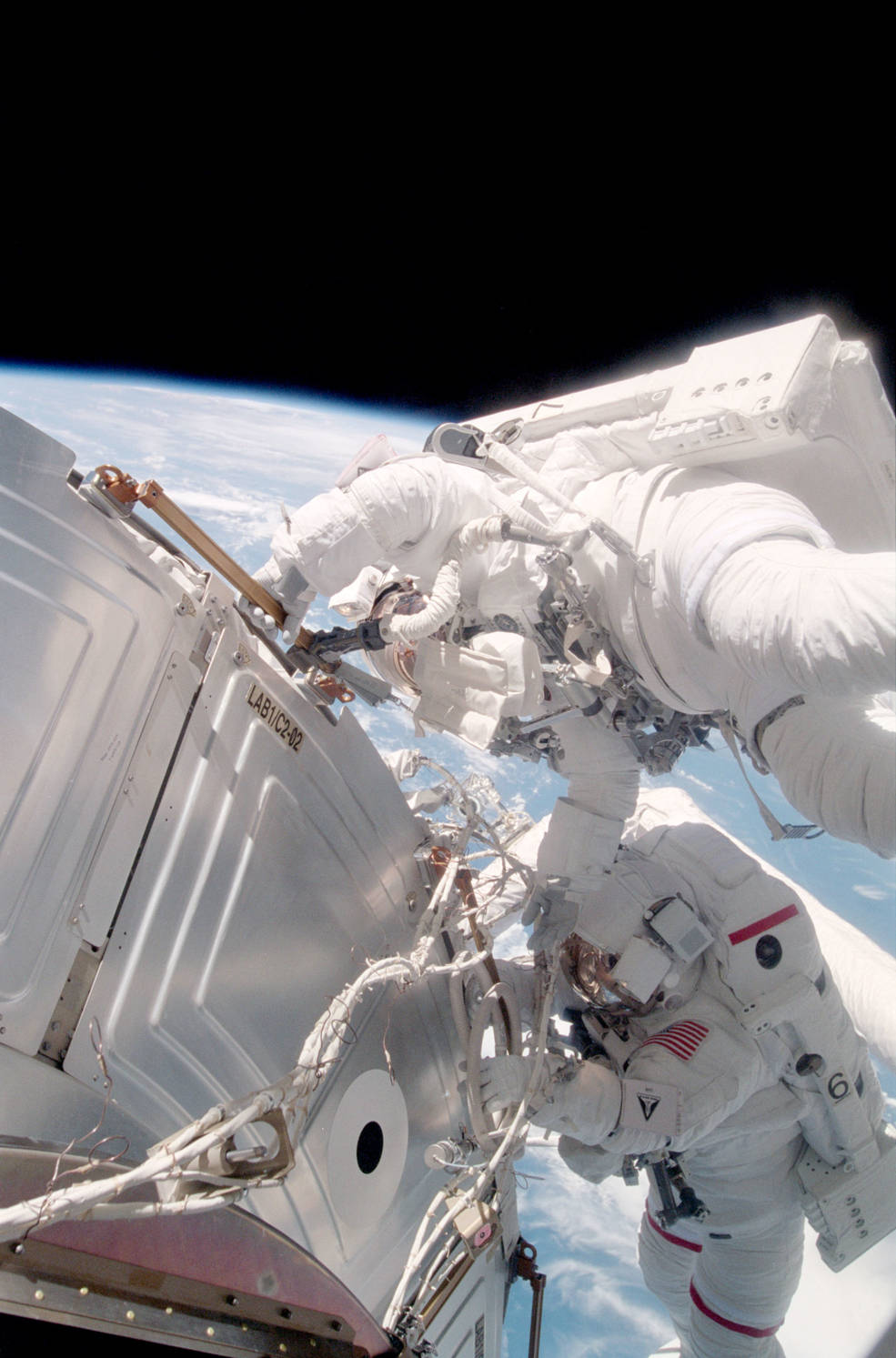
Left: During the mission’s first spacewalk, STS-105 astronauts Daniel T. Barry, left, and
Patrick G. Forrester work to install the early ammonia servicer on the P6 truss.
Middle: During the first spacewalk, Forrester works to install and deploy one of
the two MISSE materials exposure suitcases. Right: During the mission’s second
spacewalk, Forrester, top, and Barry work on attaching cables in preparation
for the arrival of the S0 truss segment on the next space shuttle flight.
The following day, with the hatches between the two spacecraft once again open, in a now traditional ceremony, Usachev formally handed over command of the space station to Culbertson, with the rest of the joint crew looking on. After a few more transfers and crew handover activities, the crews once again closed the hatches ahead of the next day’s second spacewalk. Barry and Forrester stepped out of the shuttle’s airlock to begin their 5-hour, 29-minute activity, this time to deploy cables and install handrails on the outside of the Destiny module to prepare for the S0 truss segment arriving on the next space shuttle mission. The day after the second spacewalk, Aug. 19, the crew returned the MPLM to the payload bay with more than 3,000 pounds of hardware to return to Earth.
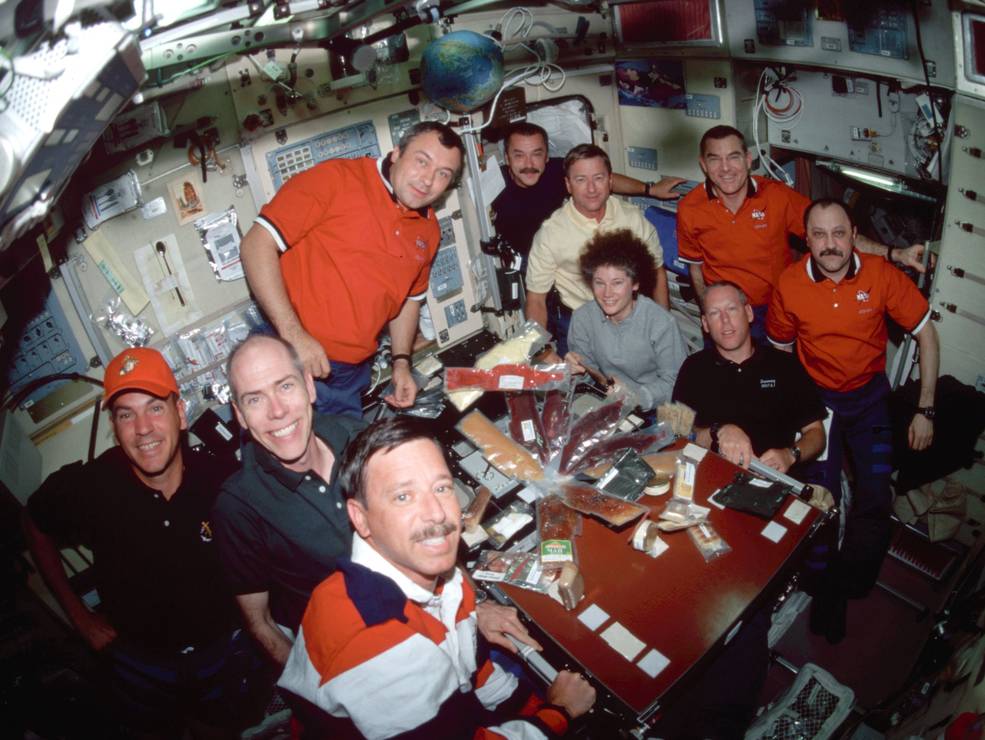
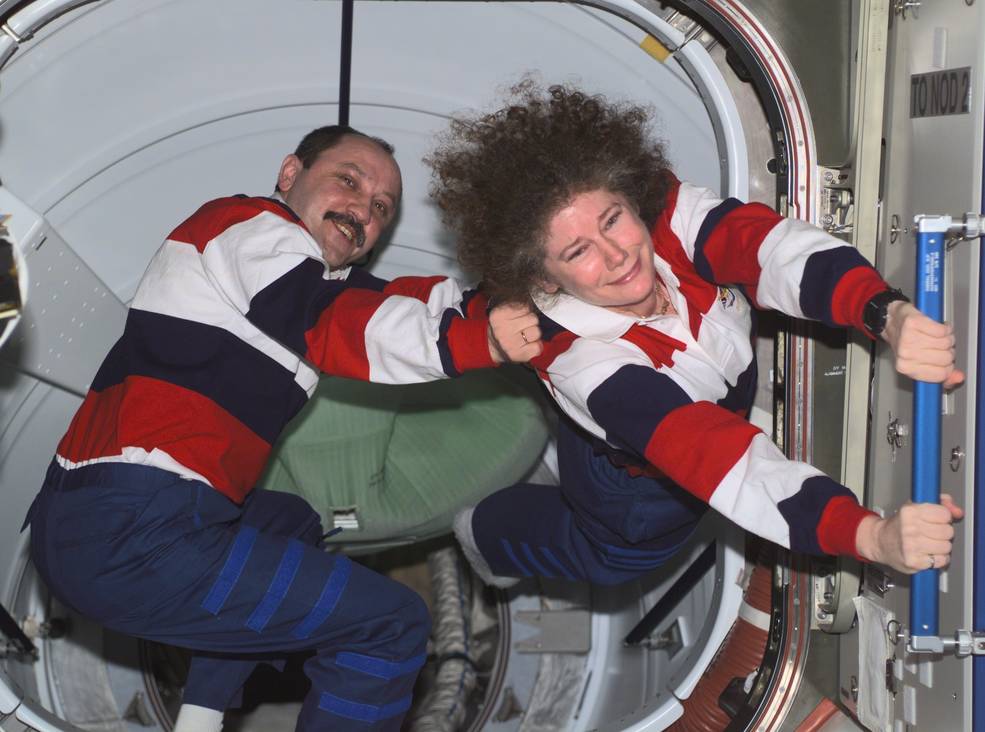
Left: The ten members of the STS-105, Expedition 2 and 3 crews enjoy a meal together in the
Zvezda Service Module. Right: In a playful photograph, Expedition 2 cosmonaut Yuri V. Usachev
pretends to pull a reluctant astronaut Susan J. Helms when it was time for them and fellow
astronaut James S. Voss to transfer from the space station to space shuttle Discovery for
their journey back to Earth.
On August 20, with Sturckow at the controls, the shuttle undocked from the space station. He flew Discovery around the station as the crew photographed it. Two days later, Horowitz brought Discovery home for a smooth landing at the shuttle landing facility at KSC. The space shuttle mission lasted 12 days, 18 hours, and 36 minutes while the returning Expedition 2 crew of Usachev, Voss, and Helms logged 167 days, 6 hours, and 41 minutes in space.
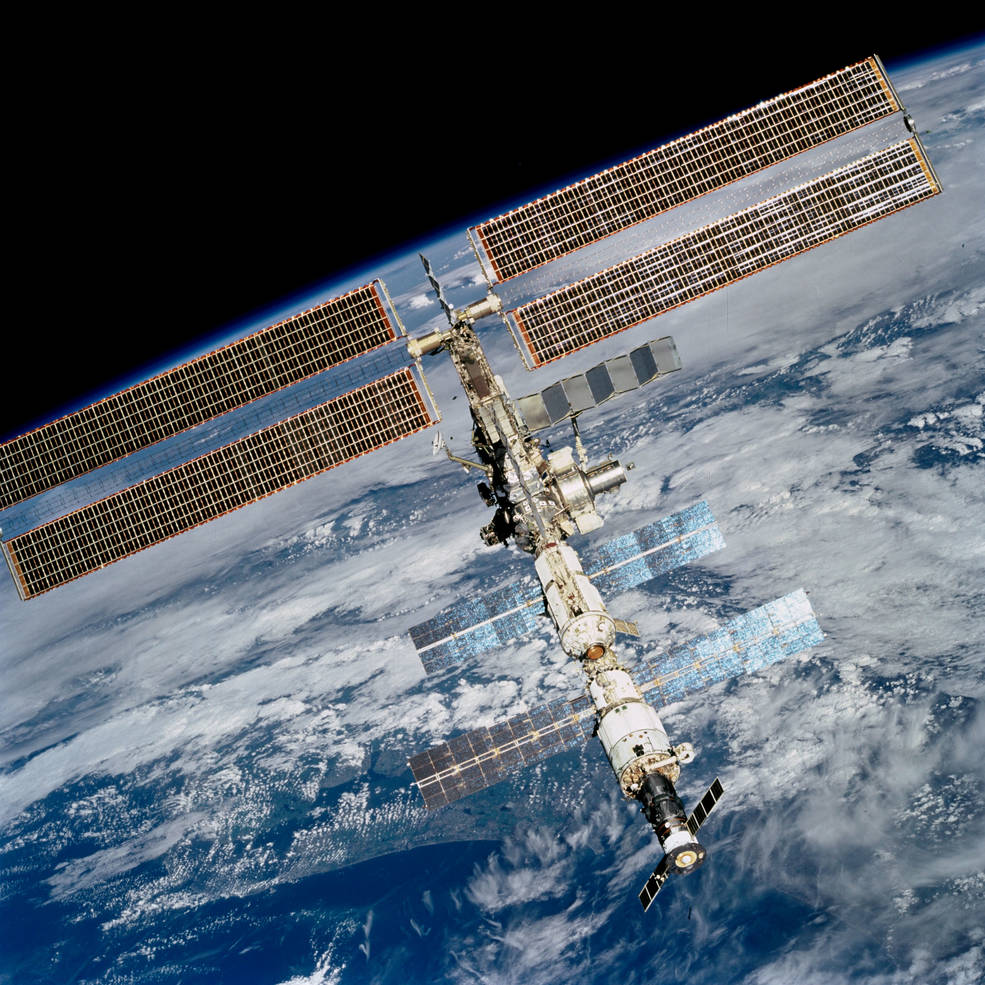
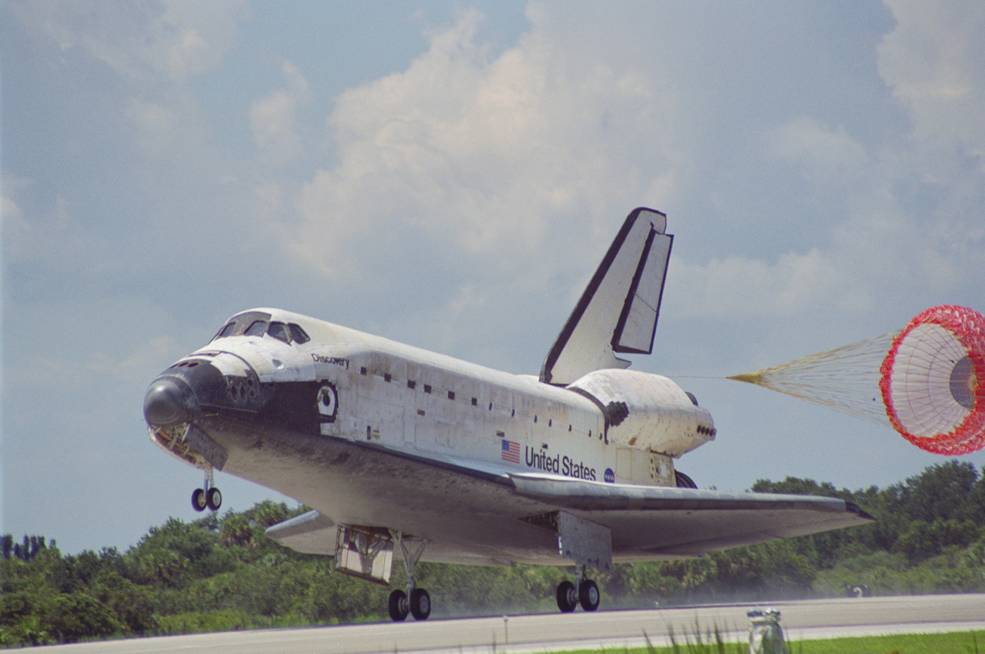
Left: The International Space Station photographed by the STS-105 crew during departure.
Right: Space shuttle Discovery making a landing at NASA’s Kennedy Space Center in Florida.
Enjoy this crew-narrated video about the STS-105 mission.




